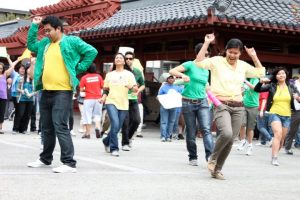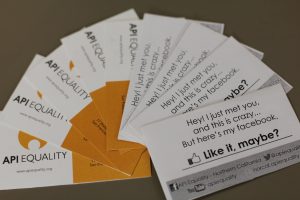Dancing Towards Justice
Dancing. It takes a bit to overcome the embarrassment but with enthusiastic teachers, good music and some goofy moves, you’ll get smiles, active participants and a whole lotta positive visibility.
I have to admit, at first even I was reluctant to dance in the API Equality and NQAPIA board opening plenary flash mob. My floppy limbs and general ineptitude for choreography left me standing in the corner dancing by myself and sobbing tears of frustration over, “why on earth do I have to dance/but not really dance because I can’t dance…in front of 300 people”. This all changed once we arrived to the conference and started teaching the dance to our east coast dance partners.
I hadn’t even gotten the dance down at this point but somehow in a room of 15+ people that I’ve never met before, none of that mattered and I was able to grasp the dance and even dance in front as an example. I made friends because, you can’t be shy when you’re out there moving your body in every direction. I also felt euphoric, the short dance lesson was packed with cardio resulting in a wonderful endorphin boost.
The next morning was showtime. We woke up bright and early at 6am (3am western time) and practiced a final time before all of the attendees filled up the opening plenary. We sat in our seats waiting for the cue and after some technical errors we jumped into the dance. The energy jumped a couple levels as our audience laughed and clapped along. The speakers for the opening plenary were in on the flash mob too and held up signs saying “Hey, I just met you and this is crazy!” As the flash mob came to an end we rushed back to our seats while throwing out our business cards with the phrase, “Hey, I just met you. And this is crazy. But here’s my facebook… Like it maybe?”
The opening plenary was perfectly timed to advertise for our flash mob workshop: “Dancing for Justice,” that was in the workshop session right afterward. Our check-in question and ice annihilator required people to perform their favorite dance move. We went around the room and repeated each other’s moves in order and by the time we were done, everyone knew each other’s name and had something to do physically when they met the person next.
After that, we explained API Equality’s own experience with building the flash mob in SF Chinatown. The recruitment amassed 100 new volunteers just by tapping into the networks of the 3 interns and 2 staff members of that year. We had dancers, filmers, help with logistics and choreographers. The flash mob was geared towards language accessibility of the queer experience so the flash mob signs had words related to queer love in many different languages.
After that we opened the floor for our participants to talk about their own experiences of alternative methods of activism. The responses were varied and inspiring. We learned a lot of tactics beyond flash mobbing used all throughout the US. With that we launched into discussing how we all would bring these actions back to our communities. It was interesting learning the dynamics of the communities people were coming from and trying to formulate solutions to increase awareness and membership. Coming back together, people were inspired to take on new forms of action.
How can you top fun, community building, visibility, self care and dancing? You can’t! Flash mobs and other alternative actions can engage the hearts and minds of communities we don’t usually interact with while simultaneously
VIDEOS:



